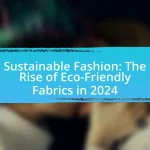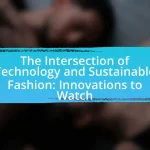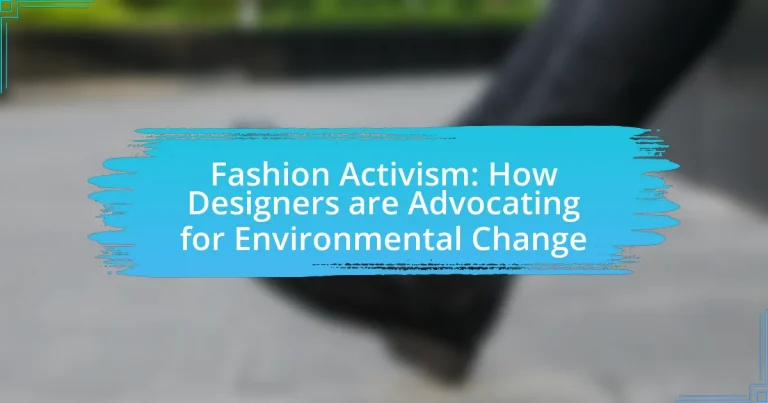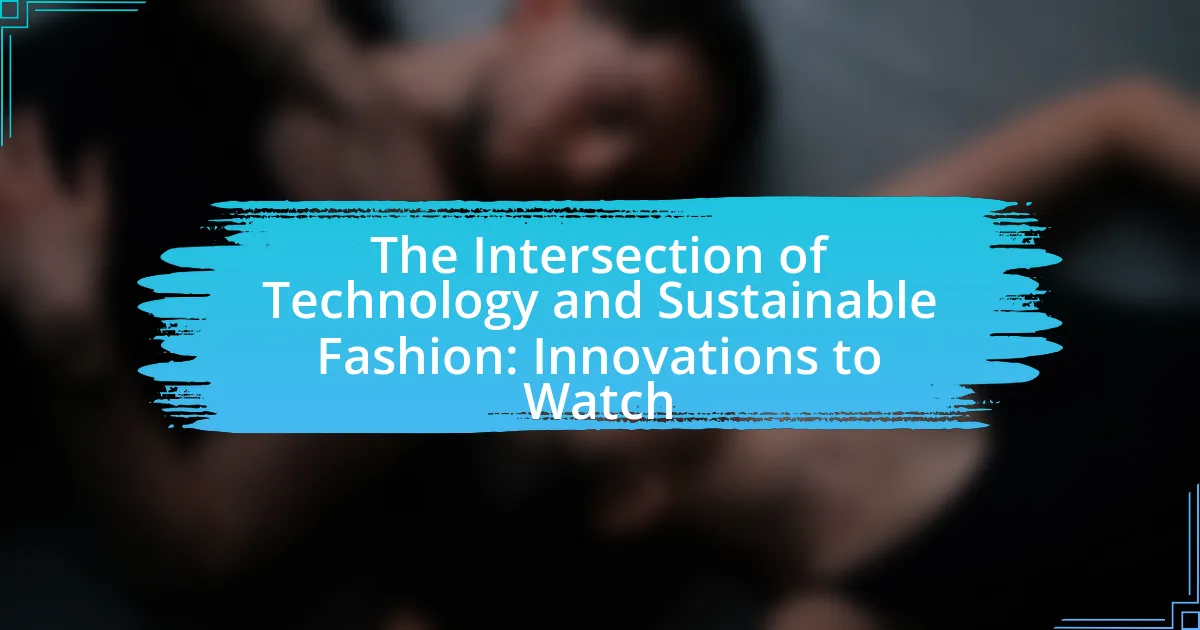Fashion activism is a movement where designers and consumers advocate for sustainable practices within the fashion industry to address environmental degradation, including waste, pollution, and unethical labor practices. The article explores how designers define fashion activism, its key principles such as sustainability and social justice, and the differences between fashion activism and traditional activism. It highlights the significant environmental impacts of the fashion industry, the influence of consumer behavior on sustainability, and the motivations behind designers’ engagement in activism. Additionally, the article discusses the challenges designers face, the role of technology and education in promoting sustainable practices, and practical steps designers can take to enhance their activism efforts.
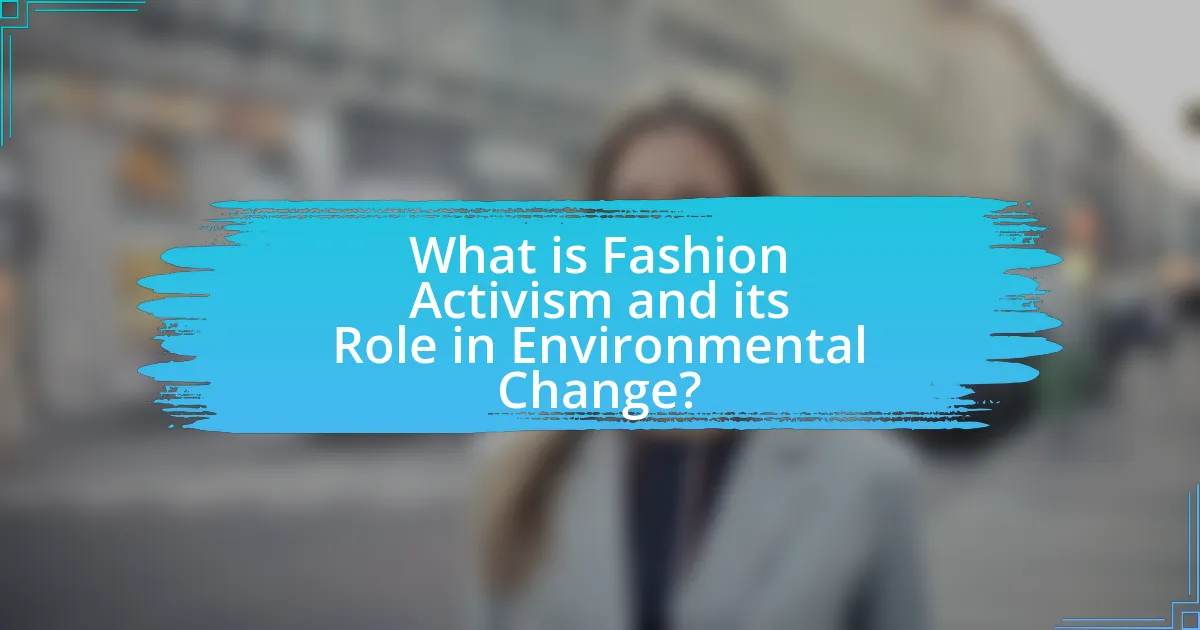
What is Fashion Activism and its Role in Environmental Change?
Fashion activism is a movement where designers and consumers advocate for sustainable practices within the fashion industry to combat environmental degradation. This activism addresses issues such as waste, pollution, and unethical labor practices by promoting eco-friendly materials, ethical production methods, and circular fashion concepts. For instance, the Ellen MacArthur Foundation reports that the fashion industry is responsible for 10% of global carbon emissions, highlighting the urgent need for change. By raising awareness and implementing sustainable practices, fashion activism plays a crucial role in driving environmental change and encouraging a shift towards a more responsible industry.
How do designers define fashion activism?
Designers define fashion activism as the use of fashion to promote social and environmental change. This definition encompasses actions such as advocating for sustainable practices, raising awareness about ethical labor conditions, and challenging consumerism. For instance, designers like Stella McCartney emphasize eco-friendly materials and production methods, illustrating how fashion can serve as a platform for activism. This approach is supported by the growing trend of brands integrating sustainability into their core values, reflecting a shift in consumer expectations towards responsible fashion.
What are the key principles of fashion activism?
The key principles of fashion activism include sustainability, ethical production, and social justice. Sustainability focuses on minimizing environmental impact through eco-friendly materials and practices, as evidenced by the rise of brands using organic cotton and recycled fabrics. Ethical production emphasizes fair labor practices and transparency in supply chains, with organizations like Fashion Revolution advocating for workers’ rights. Social justice addresses issues such as diversity and inclusion within the fashion industry, promoting representation and equity. These principles collectively aim to create a more responsible and equitable fashion landscape.
How does fashion activism differ from traditional activism?
Fashion activism differs from traditional activism primarily in its focus on the fashion industry as a platform for social and environmental change. While traditional activism often addresses broader societal issues through protests, policy changes, and awareness campaigns, fashion activism specifically utilizes clothing, design, and consumer behavior to promote messages related to sustainability, ethical production, and social justice. For instance, brands like Patagonia and Stella McCartney incorporate environmental advocacy directly into their business models, demonstrating how fashion can serve as a vehicle for activism. This approach not only raises awareness but also encourages consumers to make conscious choices, thereby integrating activism into everyday life through fashion.
Why is environmental change a critical issue in fashion?
Environmental change is a critical issue in fashion because the industry significantly contributes to pollution, resource depletion, and climate change. The fashion sector is responsible for approximately 10% of global carbon emissions and is the second-largest consumer of water, leading to severe environmental degradation. Additionally, the production processes often involve toxic chemicals that harm ecosystems and human health. These factors necessitate urgent action from designers and brands to adopt sustainable practices and advocate for environmental responsibility.
What are the environmental impacts of the fashion industry?
The environmental impacts of the fashion industry are significant, primarily involving pollution, resource depletion, and waste generation. The industry is responsible for approximately 10% of global carbon emissions, largely due to energy-intensive production processes and transportation. Additionally, it consumes vast amounts of water; for instance, producing a single cotton t-shirt requires about 2,700 liters of water, which contributes to water scarcity in many regions. Furthermore, the fashion industry generates substantial textile waste, with an estimated 92 million tons of textiles discarded annually, leading to increased landfill use and environmental degradation. These facts underscore the urgent need for sustainable practices within the fashion sector to mitigate its detrimental effects on the environment.
How does consumer behavior influence environmental change in fashion?
Consumer behavior significantly influences environmental change in fashion by driving demand for sustainable practices and products. When consumers prioritize eco-friendly materials and ethical production methods, brands are compelled to adapt their practices to meet these expectations. For instance, a 2021 survey by McKinsey & Company found that 67% of consumers consider the use of sustainable materials important when making fashion purchases. This shift in consumer preferences encourages brands to invest in sustainable technologies and reduce waste, ultimately leading to a more environmentally conscious industry.
What are the motivations behind designers engaging in fashion activism?
Designers engage in fashion activism primarily to promote sustainability and address social issues within the fashion industry. This motivation stems from a growing awareness of the environmental impact of fast fashion, which contributes to pollution and waste. For instance, the Ellen MacArthur Foundation reports that the fashion industry is responsible for 10% of global carbon emissions, prompting designers to advocate for eco-friendly practices. Additionally, many designers aim to challenge labor injustices and promote ethical production methods, as highlighted by the Fashion Revolution movement, which calls for transparency in supply chains. These motivations reflect a commitment to creating a more responsible and equitable fashion landscape.
How do personal values shape a designer’s approach to activism?
Personal values significantly influence a designer’s approach to activism by guiding their choices in materials, messaging, and overall design philosophy. Designers who prioritize sustainability, for instance, often select eco-friendly materials and advocate for ethical production practices, reflecting their commitment to environmental stewardship. This alignment of personal values with professional practices can be seen in the work of designers like Stella McCartney, who emphasizes cruelty-free fashion and sustainable sourcing, thereby demonstrating how individual beliefs can shape broader industry practices and consumer awareness.
What role does public awareness play in motivating designers?
Public awareness significantly motivates designers by creating a demand for sustainable and ethical practices in the fashion industry. When consumers are informed about environmental issues, such as pollution and waste generated by fast fashion, designers feel compelled to align their work with these values to meet consumer expectations. For instance, a survey by McKinsey & Company in 2021 revealed that 67% of consumers consider sustainability when making a purchase, prompting designers to innovate and adopt eco-friendly materials and processes. This shift not only enhances brand loyalty but also drives designers to advocate for environmental change through their collections, reflecting the growing public consciousness around sustainability.
How are designers implementing fashion activism in their work?
Designers are implementing fashion activism by integrating sustainable practices and advocating for social justice within their collections. Many designers utilize eco-friendly materials, such as organic cotton and recycled fabrics, to reduce environmental impact, as evidenced by brands like Stella McCartney, which has been a pioneer in sustainable fashion since 2001. Additionally, designers are using their platforms to raise awareness about issues like climate change and labor rights, often collaborating with non-profit organizations to promote ethical practices. For instance, the Fashion Revolution movement encourages transparency in the supply chain, urging consumers to question the origins of their clothing. This approach not only highlights the importance of sustainability but also fosters a community of conscious consumers and advocates for systemic change in the fashion industry.
What strategies do designers use to promote sustainability?
Designers promote sustainability through strategies such as using eco-friendly materials, implementing ethical production practices, and advocating for circular fashion. Eco-friendly materials, like organic cotton and recycled fabrics, reduce environmental impact by minimizing resource consumption and waste. Ethical production practices ensure fair labor conditions and reduce carbon footprints, as seen in brands that prioritize local sourcing and transparent supply chains. Circular fashion, which emphasizes recycling and upcycling, encourages consumers to extend the lifecycle of garments, thereby reducing landfill waste. These strategies collectively contribute to a more sustainable fashion industry.
How do collaborations enhance the impact of fashion activism?
Collaborations enhance the impact of fashion activism by combining resources, expertise, and audiences from different stakeholders, leading to greater visibility and influence. For instance, partnerships between fashion brands and environmental organizations can amplify messages about sustainability, as seen in the collaboration between Stella McCartney and the environmental group Greenpeace, which raised awareness about sustainable practices in the fashion industry. Such alliances not only broaden the reach of activism but also foster innovation in sustainable design, as diverse perspectives contribute to more effective solutions. This synergy ultimately drives consumer engagement and encourages systemic change within the industry.
What innovative materials are being used in sustainable fashion design?
Innovative materials used in sustainable fashion design include organic cotton, Tencel, recycled polyester, and mushroom leather. Organic cotton is grown without harmful pesticides, reducing environmental impact. Tencel, made from sustainably sourced wood pulp, is biodegradable and produced in a closed-loop process that minimizes waste. Recycled polyester, derived from plastic bottles, diverts waste from landfills and reduces reliance on virgin materials. Mushroom leather, a plant-based alternative, offers a sustainable option to traditional leather, utilizing mycelium to create a biodegradable product. These materials collectively contribute to reducing the ecological footprint of the fashion industry.
What challenges do designers face in advocating for environmental change?
Designers face significant challenges in advocating for environmental change, primarily due to industry resistance and consumer behavior. The fashion industry is heavily entrenched in fast fashion practices, which prioritize rapid production and low costs over sustainability. This resistance is compounded by a lack of awareness among consumers regarding the environmental impact of their purchasing decisions, making it difficult for designers to promote sustainable alternatives effectively. Additionally, designers often encounter limited access to sustainable materials and technologies, which can hinder their ability to create eco-friendly products. According to a 2021 report by McKinsey & Company, only 30% of fashion executives believe that sustainability is a top priority, illustrating the systemic barriers designers must navigate in their advocacy efforts.
How do economic factors affect the implementation of sustainable practices?
Economic factors significantly influence the implementation of sustainable practices by determining the financial viability and resource allocation for such initiatives. For instance, high initial costs associated with sustainable materials and technologies can deter companies from adopting eco-friendly practices, as evidenced by a 2021 McKinsey report indicating that 66% of fashion executives cite cost as a major barrier to sustainability. Additionally, market demand for sustainable products can drive investment; when consumers prioritize eco-friendly options, businesses are more likely to allocate resources towards sustainable practices to meet this demand. Thus, economic conditions, including consumer behavior and cost structures, play a crucial role in shaping the extent to which sustainable practices are integrated into the fashion industry.
What resistance do designers encounter from the fashion industry?
Designers encounter significant resistance from the fashion industry primarily due to entrenched practices and profit-driven motives that prioritize fast fashion over sustainable practices. The industry’s focus on rapid production cycles and low-cost materials often undermines efforts for environmental change, as many brands are reluctant to invest in sustainable alternatives that may increase costs. Additionally, established power structures within the industry, including major retailers and supply chains, often resist changes that could disrupt their existing business models. This resistance is evident in the slow adoption of eco-friendly materials and practices, despite growing consumer demand for sustainability, as highlighted by a 2021 McKinsey report indicating that only 30% of fashion companies have made significant commitments to sustainability.
How can consumers support fashion activism?
Consumers can support fashion activism by choosing to purchase from brands that prioritize sustainability and ethical practices. By selecting clothing from companies that use eco-friendly materials, implement fair labor practices, and promote transparency in their supply chains, consumers directly contribute to a more responsible fashion industry. Research indicates that the global sustainable fashion market is projected to reach $8.25 billion by 2023, reflecting a growing consumer demand for ethical options. Additionally, consumers can engage in advocacy by participating in campaigns that promote environmental awareness and supporting initiatives that hold brands accountable for their environmental impact.
What are the best practices for consumers to promote sustainable fashion?
Consumers can promote sustainable fashion by prioritizing the purchase of eco-friendly brands, supporting second-hand shopping, and practicing mindful consumption. Eco-friendly brands often utilize sustainable materials and ethical labor practices, which contribute to reducing environmental impact. Second-hand shopping extends the lifecycle of garments, thereby minimizing waste and resource consumption. Mindful consumption involves buying only what is necessary, which helps reduce overproduction and encourages brands to adopt sustainable practices. According to a report by the Ellen MacArthur Foundation, the fashion industry could reduce its greenhouse gas emissions by 44% by 2030 if consumers shift towards sustainable practices.
How can consumers influence brands to adopt environmentally friendly practices?
Consumers can influence brands to adopt environmentally friendly practices by leveraging their purchasing power and vocalizing their preferences for sustainable products. When consumers prioritize eco-friendly options, brands are compelled to respond to market demand; for instance, a 2021 Nielsen report indicated that 73% of global consumers are willing to change their consumption habits to reduce environmental impact. Additionally, consumers can utilize social media platforms to raise awareness and pressure brands through campaigns, as seen in movements like #WhoMadeMyClothes, which has prompted brands to disclose their supply chain practices. This collective consumer action not only drives brands to adopt sustainable practices but also fosters a culture of accountability within the fashion industry.
What future trends can we expect in fashion activism?
Future trends in fashion activism will increasingly focus on sustainability, inclusivity, and transparency. Designers are expected to adopt eco-friendly materials and practices, as evidenced by the rise of brands like Stella McCartney, which has pioneered sustainable fashion since the early 2000s. Additionally, the movement will likely emphasize social justice, with more brands advocating for fair labor practices and diversity in representation. According to a 2021 McKinsey report, 67% of consumers consider sustainability when making fashion purchases, indicating a growing demand for ethical practices. Furthermore, technology will play a crucial role, with innovations such as blockchain being utilized to ensure supply chain transparency, allowing consumers to trace the origins of their clothing. These trends reflect a broader societal shift towards responsible consumption and ethical production in the fashion industry.
How might technology shape the future of sustainable fashion?
Technology will significantly shape the future of sustainable fashion by enabling innovative materials, enhancing supply chain transparency, and promoting circular economy practices. Advanced technologies such as 3D printing allow for the creation of biodegradable fabrics, reducing waste and resource consumption. Blockchain technology can provide traceability in the supply chain, ensuring that materials are sourced ethically and sustainably. Additionally, artificial intelligence can optimize production processes, minimizing overproduction and excess inventory, which are major contributors to environmental degradation. These technological advancements collectively support the shift towards a more sustainable fashion industry, aligning with the growing consumer demand for environmentally responsible practices.
What role will education play in the evolution of fashion activism?
Education will play a crucial role in the evolution of fashion activism by equipping individuals with the knowledge and skills necessary to advocate for sustainable practices within the industry. Through educational programs focused on environmental issues, ethical sourcing, and sustainable design, future designers and consumers will be empowered to make informed choices that promote ecological responsibility. For instance, institutions like the London College of Fashion offer courses specifically aimed at integrating sustainability into fashion, demonstrating a commitment to fostering a new generation of activists who prioritize environmental change. This educational foundation will not only raise awareness but also inspire innovative solutions to combat the negative impacts of fast fashion on the planet.
What practical steps can designers take to enhance their activism efforts?
Designers can enhance their activism efforts by integrating sustainable materials into their collections, thereby reducing environmental impact. For instance, using organic cotton or recycled fabrics can significantly lower carbon footprints, as studies show that organic cotton farming uses 91% less water than conventional methods. Additionally, designers can advocate for ethical labor practices by collaborating with fair trade organizations, ensuring that workers receive fair wages and safe working conditions. Engaging in community outreach programs to educate consumers about sustainable fashion choices also amplifies their activism, as informed consumers are more likely to support eco-friendly brands. Furthermore, leveraging social media platforms to raise awareness about environmental issues can mobilize a larger audience, as campaigns that go viral can reach millions, driving collective action for change.







